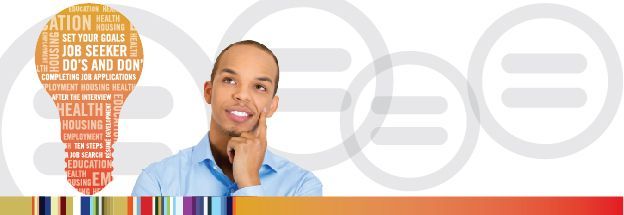CREATING COVER LETTERS

A cover letter is another important job marketing tool that is just as important as your résumé. This is the first impression an employer has of your work. Remember, first impressions are lasting impressions. It is a major marketing tool to gain the interest of the employer. It provides you with an opportunity to grab their attention, and allows you to showcase your relevant skills and experience as it relates to the employer's needs. It also provides an opportunity to explain any shortcomings of your résumé, and directs the employer's attention to the parts of your résumé that relate to the job opening. The following is a breakdown of the different parts of your cover letter:
-
CONTACT INFORMATION
Include electronic communication on your cover letter. Provide a current e-mail address (that you check regularly) along with a phone number that will roll to voice mail if you are unavailable. However, make sure the voicemail you are directing the employer to has a professional and courteous message.
-
FORMAT
Cover letters should be written in a business format. Parts of a cover letter include job seeker's address and phone number, date, employer's name and address, salutation, body, closing, and enclosure.
-
SALUTATION
Use the employer's name and title if known. Do not use a first name only; use the entire name or last name such as "Dear Mr. Wilson". Otherwise, address as "Dear Sir or Madam". Note that cover letters not addressed to a specific person should be avoided if possible. If you are not referring to a specific job announcement, many human resource staff consider generic cover letters and résumés to be the same as spam or junk mail.
-
FIRST PARAGRAPH
Your first sentence should tell how you learned of the possible opening. Use the remainder of the paragraph to express interest in a specific position or a particular kind of job and state that you have enclosed a résumé.
-
SECOND AND THIRD PARAGRAPHS
Your cover letter needs to fit the needs of the organization and the job of interest. Direct attention to your qualifications and company knowledge. Remember, the purpose of your cover letter is to convince the employer to read your résumé. The letter needs to be concise and professional. Qualifications may include relevant skill sets from previous employment, recent education, or volunteer experience. If you do not explain how you qualify for a position or what you bring to the company, the reader may eliminate your résumé quickly.
-
FOURTH PARAGRAPH
Request an interview that takes into consideration the company and type of job for which you are applying. End the letter by thanking the person for their consideration.
-
CLOSING AND SIGNATURE
May use: Sincerely, Yours truly, Sincerely yours, or Cordially.
-
ENCLOSURE
Notice of what you included with your cover letter, such as résumé or work samples.
-
PHOTOS
It is not appropriate to include your photo on a résumé or cover letter.
